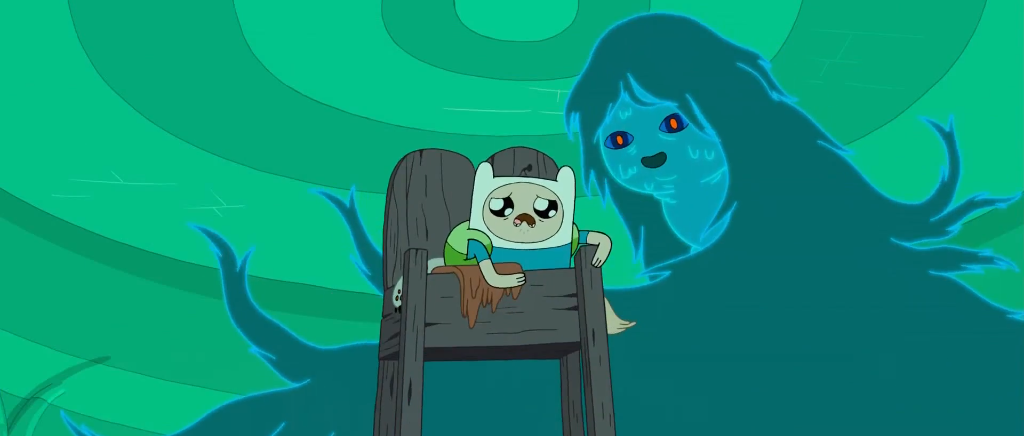The Dream and "King Worm"
7:00 AM |
| Salvador Dali, The Dream, 1931 |
Salvador Dali’s intense, bizarre imagery makes his work instantly recognizable. He captures perfectly the surreal feelings of disassociation, helplessness, and sensory deprivation that accompany dreams. The central figure of The Dream is a pale woman with her hair flowing strangely into almost baroque contortions, with her eyes swollen and sealed shut. Ants crawl over where her mouth should be. Tiny, naked figures in the background pose in strange contortions or embrace. By combining his contemporary Freud’s theories of psychology with his own flair for the surreal and discomforting, Dali has created an intensely vivid and personal piece.
The cartoon Adventure Time’s loose and simplistic style of animation and the bizarre nature of the land of Ooo have the potential for plenty of surreal horror. In “King Worm,” hero Finn the Human finds himself trapped in a Dali-esque dream world, forced to confront his subconscious fears in order to escape. The logic of his dreams is surreal and inconsistent, full of strange images and foreshadowing of later episodes. In particular, a ghostly woman seen momentarily during the fear sequence reminds me of the central figure here in The Dream, with her billowing hair and greenish hue. Finn's dreams include confrontations with his love interest and his close friends; eventually, he learns to control the dreamscape to some extent, but locations still change unpredictably, melt, and change in very Dali-esque ways.
 |
| Adventure Time, "King Worm" |
Dali experiments with trying to capture the helplessness and muted sensations of dreams, using the dark palette, crawling ants, and sealed facial features. The seated man in the background holding his bloody face may be Oedipus, a strong Freudian symbol, and the bust growing out of his back represents the father. Two men embrace each other, one holding what might be a golden key, and a third attempts to push his way into a red wall, symbolizing a search for meaning or escape. The strange, nonsensical actions reinforce the theme of dreaming. Dali considered this painting a strong enough representative of his work that he insisted it represent him at the First International Surrealist Exhibition in 1936.
0 comments